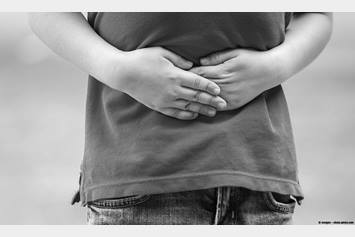GI Bleeding
Pediatricians and pediatric gastroenterologists see this quite regularly. It is estimated that GI bleeding accounts for 1% of all pediatric hospitalizations.
What Is GI Bleeding?
Upper GI Bleeding
Upper GI bleeding occurs when irritation and ulcers of the lining of the esophagus, stomach, or duodenum result in bleeding. When this occurs, the child will vomit bright red blood, or dark looking flecks or clots that look like “coffee grounds”. Sometimes, upper GI bleeding presents with the passage of black, sticky, stools (‘melena’).
Lower GI Bleeding
Lower GI bleeding occurs most frequently from the large intestine (colon) and rectum. The most common reasons for passage of bright red blood through the rectum as:
- Local irritation by cuts (fissures) or hemorrhoids
- Polyps
- Infections (for example with bacteria such as Shigella, Salmonella, or E. coli)
- Inflammation (colitis, Crohn’s disease)
Bleeding can consist of streaks or larger clots. It can be mixed in with the stools or show as a coating outside the bowel movement.
How Common Is GI Bleeding?
Pediatricians and pediatric gastroenterologists see this problem quite regularly. It is estimated that GI bleeding accounts for 1% of all pediatric hospitalizations.
Why Does GI Bleeding Happen?
In upper GI bleeding, stomach acid can irritate the lining of the esophagus to the point of causing bleeding. In other cases, retching and vomiting can cause a tear in the lining of the lower esophagus (a Mallory-Weiss tear), or abnormal veins (varices) can be present if there is a liver problem.
Ulcers in the stomach and duodenum can be due to irritation from certain medications, such as aspirin or from infection, particularly from the bacteria, H.pylori.
Uncommon sources are polyps and abnormal blood vessels.
In lower GI bleeding, straining and passage of a hard or wide stool can injure the lining of the rectum and result in bleeding. In the case of colitis, ulcers are deep enough to break the blood vessels, as the lining is inflamed and delicate. Polyps are finger-like overgrowths of the lining of the intestine and bleed when the stool rubs against them.
How Is GI Bleeding Treated?
In Upper GI bleeding, endoscopy is the best way to determine the cause of the upper GI bleeding and will be recommended if the bleeding has been serious. In this test, a fiber optic flexible tube with a video system allows a direct look into the esophagus, stomach and duodenum. If active bleeding is seen, it can be stopped by injecting medications at the source.
More commonly, upper GI bleeding is treated with medications that decrease the stomach’s acid, such as Zantac, Pepcid, Prevacid, Prilosec, etc., while the lining heals.
The treatment of lower GI bleeding depends on the cause and the location of the bleeding. Colonoscopy is the best way to determine the cause of lower GI bleeding and will be recommended if the bleeding suggests a polyp or a diagnosis of colitis is suspected. In this test, a fiber optic flexible tube with a video system allows a direct look into the rectum and can be advanced throughout the large intestine. Polyps can be removed during the colonoscopy with special snares, and biopsies taken for diagnosis or culture.
Local fissures and hemorrhoids are managed with diet modification, stool softeners and topical creams and ointments.
What Can I Expect?
Most children with an upper GI bleed recover very well. Those with certain liver or clotting problems can suffer from more serious and repeated bleeds. Blood transfusions or surgery might be indicated in the more severe cases. Management in the hospital by pediatric specialists will help provide optimal care.
In lower GI bleeding, polyps in children are mostly benign and usually do not recur. Follow up colonoscopy might be necessary in some cases.
Preventing constipation will help avoid the recurrence of fissures and rectal irritation.
If colitis is the reason for the bleeding, medications will be prescribed to heal the inflammation.


